hlmbrwng
Well-Known Member
I recently brewed a imperial stout. Had problems with efficiency and added a few lbs of dry light malt extract. Re-hydrated (at about 98F) and pitched 3 packets of US-05 (somewhere in the high 70s). OG was 1.121.
Aerated with pure O2 for a little over a minute, before pitching the yeast. There did not seem to be much going on, but still aerated a second time at 16 hrs. Fermentation seemed slow. Was in a chamber at a constant 68F for days. Still seemed very cloudy after about 6 days and fermentation was slowing down. Took a gravity reading on hydrometer. 1.043. Thought that it needed more time and all the junk would drop out. Increased the temp to about 70.
Now at about day 10, it is still really cloudy. Took another reading. Again at about 1.043. BUT...this time also took a reading with the refractometer. At 1.070. HUHHHH?
Tasted the beer. It tastes about as sweet as a bourbon county, which is what I was shooting for (but thought I'd get down closer to 1.035). Is it possible that the true gravity is 1.043 and that there is a bunch of protein and what-not that is causing the refractometer to show a greater than actual reading?
1) Here is the refractometer reading
2) Here is a picture of the carboy, WITH flashlight shining on it
3) Here is a side shot of sample WITH flashlight shining on it
4) Here is a picture of WITHOUT a flashlight
5) Notice how after a few minutes it started clumping together like miso soup? Colloidal suspension. Flashlight shining in from side.
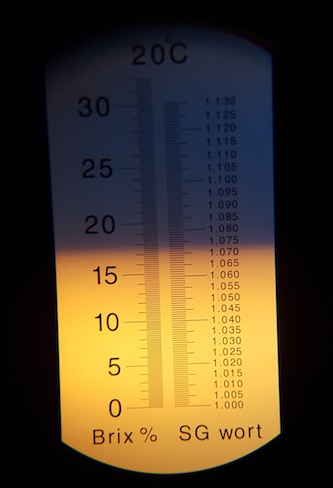
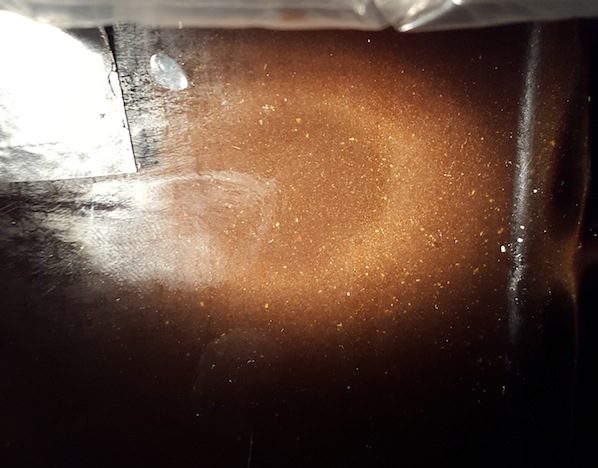
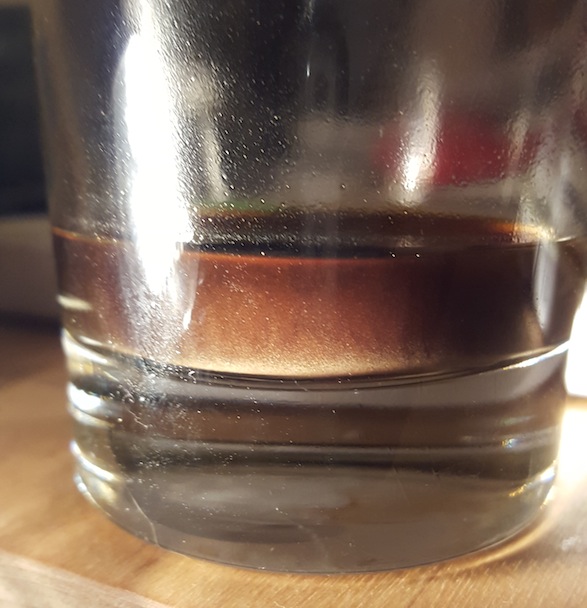
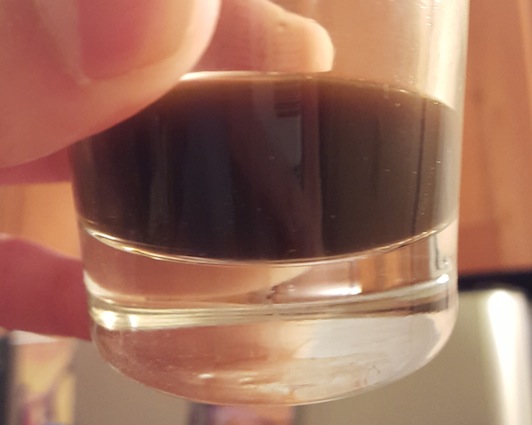
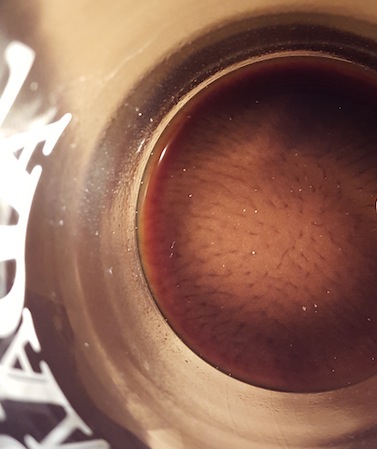
Aerated with pure O2 for a little over a minute, before pitching the yeast. There did not seem to be much going on, but still aerated a second time at 16 hrs. Fermentation seemed slow. Was in a chamber at a constant 68F for days. Still seemed very cloudy after about 6 days and fermentation was slowing down. Took a gravity reading on hydrometer. 1.043. Thought that it needed more time and all the junk would drop out. Increased the temp to about 70.
Now at about day 10, it is still really cloudy. Took another reading. Again at about 1.043. BUT...this time also took a reading with the refractometer. At 1.070. HUHHHH?
Tasted the beer. It tastes about as sweet as a bourbon county, which is what I was shooting for (but thought I'd get down closer to 1.035). Is it possible that the true gravity is 1.043 and that there is a bunch of protein and what-not that is causing the refractometer to show a greater than actual reading?
1) Here is the refractometer reading
2) Here is a picture of the carboy, WITH flashlight shining on it
3) Here is a side shot of sample WITH flashlight shining on it
4) Here is a picture of WITHOUT a flashlight
5) Notice how after a few minutes it started clumping together like miso soup? Colloidal suspension. Flashlight shining in from side.


























































![Craft A Brew - Safale S-04 Dry Yeast - Fermentis - English Ale Dry Yeast - For English and American Ales and Hard Apple Ciders - Ingredients for Home Brewing - Beer Making Supplies - [1 Pack]](https://m.media-amazon.com/images/I/41fVGNh6JfL._SL500_.jpg)


